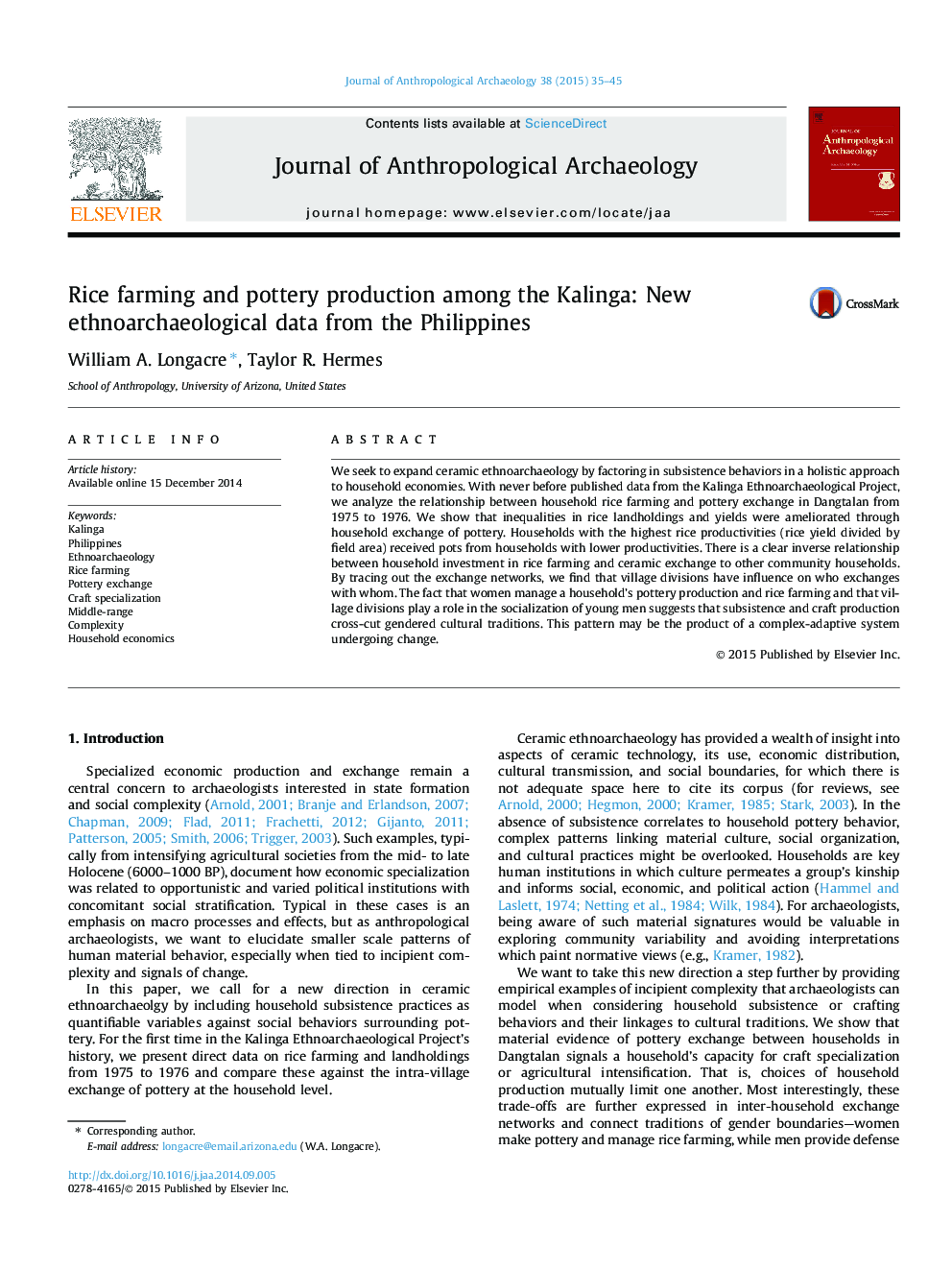| Article ID | Journal | Published Year | Pages | File Type |
|---|---|---|---|---|
| 1034908 | Journal of Anthropological Archaeology | 2015 | 11 Pages |
We seek to expand ceramic ethnoarchaeology by factoring in subsistence behaviors in a holistic approach to household economies. With never before published data from the Kalinga Ethnoarchaeological Project, we analyze the relationship between household rice farming and pottery exchange in Dangtalan from 1975 to 1976. We show that inequalities in rice landholdings and yields were ameliorated through household exchange of pottery. Households with the highest rice productivities (rice yield divided by field area) received pots from households with lower productivities. There is a clear inverse relationship between household investment in rice farming and ceramic exchange to other community households. By tracing out the exchange networks, we find that village divisions have influence on who exchanges with whom. The fact that women manage a household’s pottery production and rice farming and that village divisions play a role in the socialization of young men suggests that subsistence and craft production cross-cut gendered cultural traditions. This pattern may be the product of a complex-adaptive system undergoing change.
